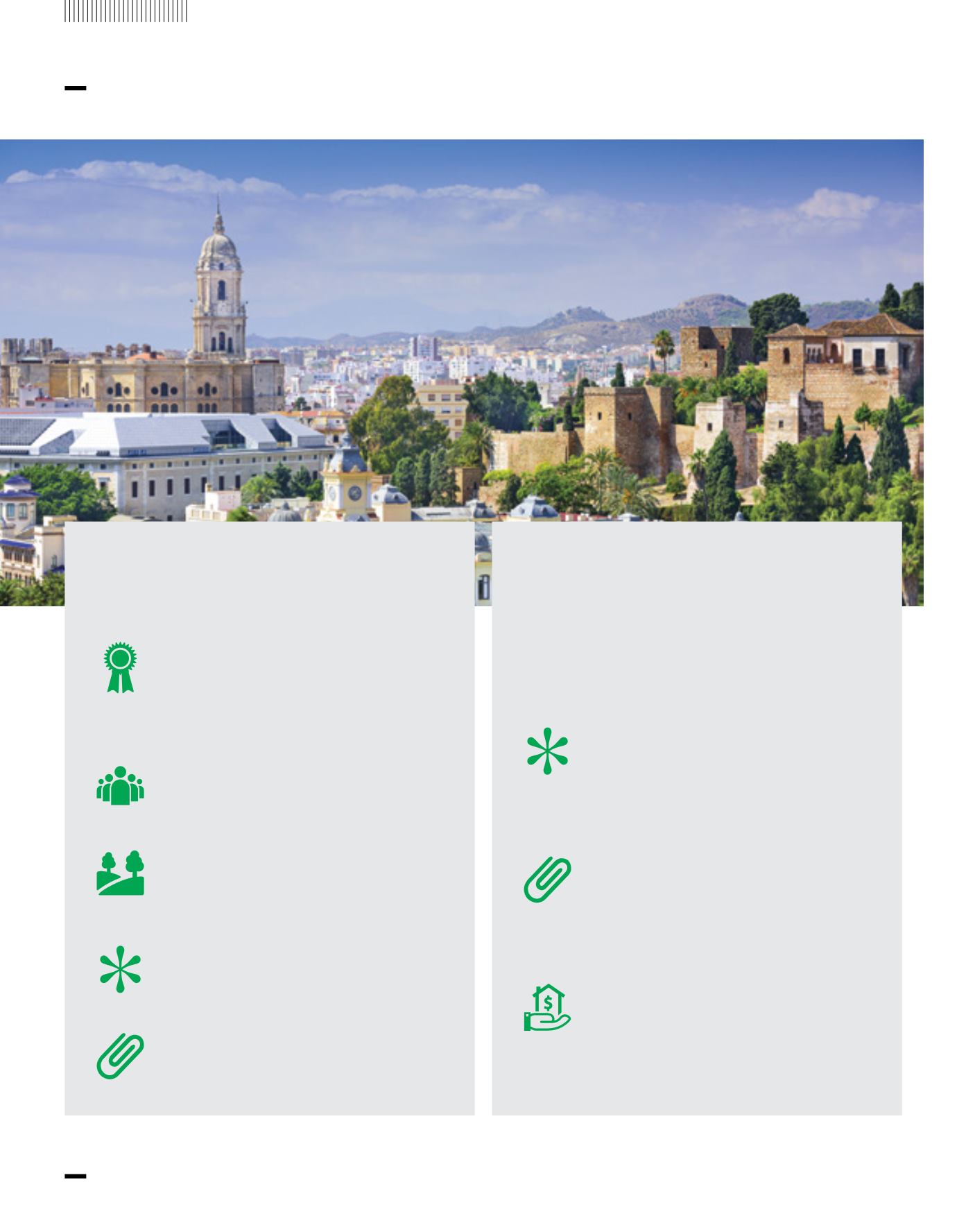

110 // iberian.propery / 2017
dossier// ISSUE: TOP IBERIAN cities
OFFICES
The activity of the office market is concentrated in the capital,
Malaga. This sector is expected to undergo a rotation in upcoming
years due to projects on the table to convert some buildings
located in the historic centre into hotels and tourist apartments.
Demand
: around 10.000 m² in 2016, take-up
is evolving favourably, driven not only by local
businesses, but also by national and international
companies (including operators in the technology
and call centre segment, for spaces above 1.000 m²).
There is also renewed interest from some companies
to purchase their premises although, at the moment,
this movement is moderate.
Supply
: 600.000 m² of stock, concentrated in four
zones (Historic Centre, Business District, Periphery
and PTA). This number does not include institutional
buildings, which represent an additional 300.000 m².
There are 100.000 m² in the pipeline exclusively for
office use, namely involving expansion of the PTA.
Rents
: stabilised. The highest rents are practised in
the Historic Centre, more specifically Calle Larios
and the surrounding area, where values above 15 €/
m² are applied in the best buildings on the Calle. The
average rents for reference are between 10 and 14€/
m² in the Business District, while in the out-of-town
areas (Teatinos, Parques Empresariales & Poligonos
Industriales) these vary between 7 and 12€/m².
HOUSING
Better quality product:
higher selectivity in terms
of the location of land, a focus on architecture with
modern lines and better quality rather than the
traditional
«Mediterranean style»
that was popular in
the previous cycle, as well as larger average areas.
This new paradigm in construction is also resulting
in higher prices, targeting a public with greater
purchasing power.
New players:
a greater presence of local developers
financed by international funds, which are risk-averse
but seek fast returns and prefer to invest in land that
is already developed.
Land
: given the lower availability of land in Marbella,
the adjacent municipalities of Mijas, Estepona,
Benahavis and San Roque have absorbed the largest
share of the development activity, accompanied by a
rise in land prices.
Demand
: in 2016, sales increased 8% in the province,
in line with the Andalusia Region but, nonetheless,
below the national average. Torremolinos, Fuengirola
and Malaga were the municipalities with the greatest
increase.
Supply
: the amount of new construction and licensed
residences continues to rise, and the launch of new
projects is expected to grow in upcoming months.

















